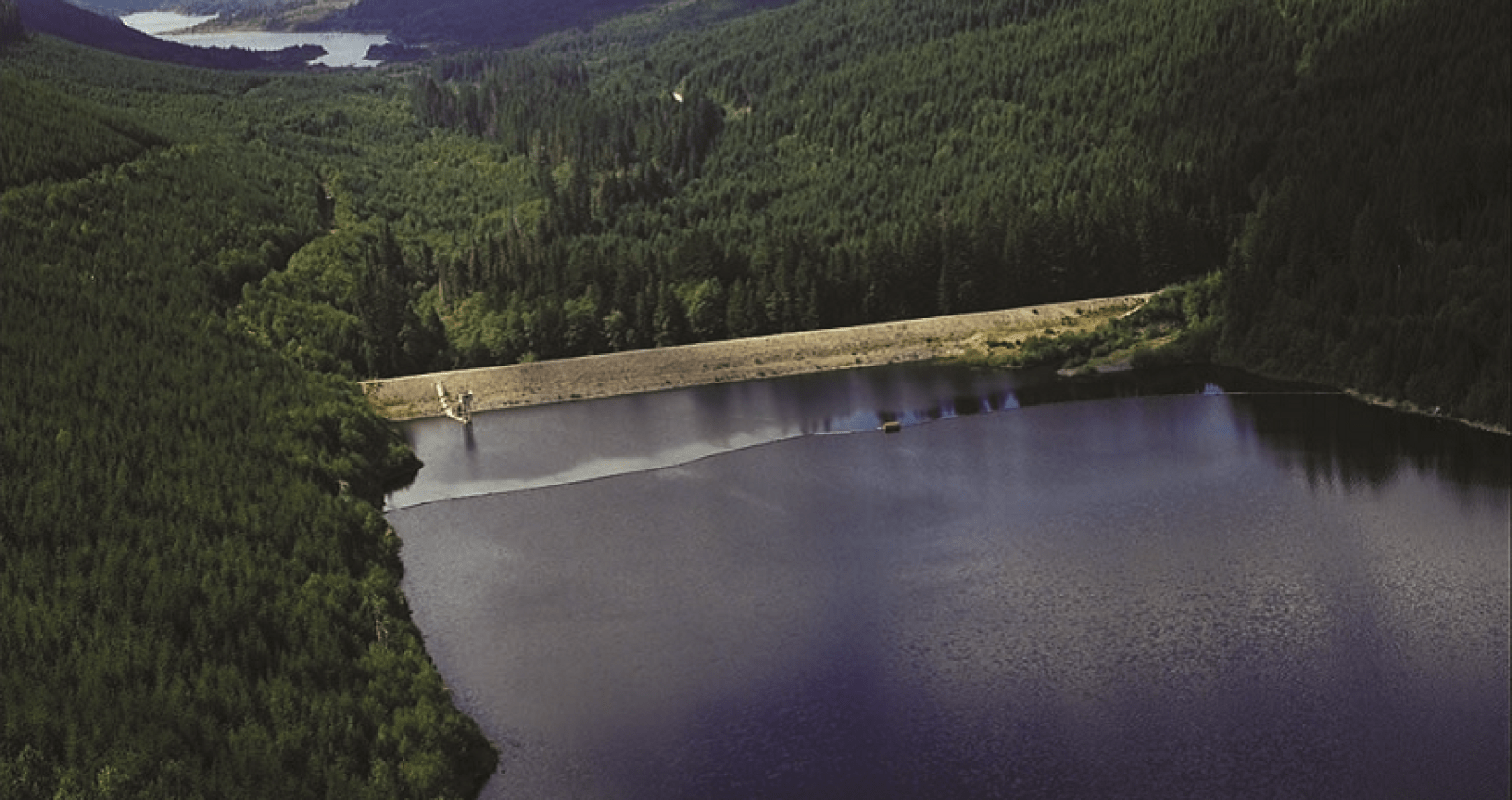A water to electricity story
Explore how natural and human-made features work together to generate electricity and power lights across B.C.

Overview
Students explore natural features such as mountains and water, and human-made features like dams, learning how these work together to create clean electricity in B.C. Through an interactive story, students learn how falling water creates electricity powering our province. The activity is rounded off with local pictures of hydroelectric dams in B.C., including the traditional territories of the Indigenous Peoples.
Instructions
What you'll need
- Digital projector and screen
- “A water to electricity story” slideshow
- “A water to electricity story” teacher handout
- Start by discussing the difference between natural and human-made features. You can also do this activity: “Natural versus human-made."
- Open “A water to electricity story" slideshow, and review features that are natural and human-made. On slide 2, explain that you'll show images, and students will need to identify if it’s natural or human-made. Suggest that students put their hands on their head if they think it's natural, and wave their hands in the air if they think it's human-made.
- Pause at slide 8 and ask students if they think some features could be both natural and human-made. Slide 9 shows furniture made of wood from trees that are natural, but cut and shaped by humans to make the chair.
- Show the image of a hydro dam on slide 10 and explain that the natural landscape of mountains and water together with the human-made dam creates electricity which powers our lights.
- At slide 11 share that you'll read a story to explore the journey of a water droplet and how this can power our lights.
- Let students participate in this interactive story. For slide 12, as a class decide actions for four words: water, rain, cloud, and electricity. Tell students that you'll read the story and when they hear one of the words: water, rain, cloud or electricity they should do the action.
- Pause the slideshow at slide 12 and using “A water to electricity story” teacher handout, read the story of how a water droplet makes electricity. In the story, the four action words have been highlighted so you can remind students to do the actions.
- Discuss how water's used to make electricity by moving through dams and spinning large wheels called turbines in slide 13. We use electricity for lights, electronics, electric vehicles, and so much more. Review that the natural features like clouds, rain, lakes, and mountains work together with human-made features like the dam, turbines, and electricity wires to power our lights.
- From slide 14 to 21, share pictures of hydro dams throughout B.C., including those found in traditional territories of the Indigenous Peoples. Pictures include dams in the Peace Region, Columbia Region, Vancouver Island and Lower Mainland and coast. Share with students which dam is closest to where they live.
Modify or extend this activity
- Check out the activity “Build a watershed” to craft a watershed and dam, learning more about how the natural features of B.C. work with the human-made features to create hydro electricity.
- Take a tour of the W.A.C. Bennett dam on the Peace River in northern B.C. with Joomin and Dave.
Curriculum Fit
Grade 1 Social Studies
Content
- Natural and human made features of the local environment
- Natural features: mountains, forests, waterways, local plants and animals
- Human-made features: buildings, bridges, dams, dykes
Curricular competencies
- Use Social Studies inquiry processes and skills to ask questions; gather, interpret, and analyze ideas; and communicate findings and decisions
- Explain the significance of personal or local events, objects, people, or places
Assessments
- Assess students understanding of features that are natural, human-made, and a combination of both.
- Assess students’ ability to focus, listening to the story and responding to the action words.
- Assess students’ basic understanding that water is used to make electricity by moving through dams.
Teaching Notes
Hydro electric generation system
More than 90% of BC Hydro's generation is produced by hydro electric generation, which is generally the most cost-effective, clean and reliable option. BC Hydro also continues to investigate alternative sources of energy, such as wind and wave power.
BC Hydro generates over 43,000 gigawatt hours of electricity annually to supply more than 1.9 million residential, commercial, and industrial customers.
Over 80% of BC Hydro's installed generating capacity is at hydroelectric installations in the Peace and Columbia river basins.
How power is generated
BC Hydro generates power by harnessing the power of moving or falling water to produce mechanical/electrical energy. This power is delivered using an interconnected system of over 73,000 kilometres of transmission and distribution lines.
The power is generated as follows:
- Hydroelectric dam: There is potential energy stored in a water reservoir behind a dam. It's converted to kinetic energy when the water starts flowing down the penstock, from the dam. This kinetic energy's used to turn a turbine.
- Generator: The falling water strikes a series of blades attached around a shaft which converts kinetic energy to mechanical energy and causes the turbine to rotate. The shaft is attached to a generator, so that when the turbine turns, the generator is driven. The generator converts the turbine's mechanical energy into electric energy.
- Transmission and distribution system: Transmission lines carry the electricity efficiently over long distances to power our lives.
For more information, read How power is generated.
BC Hydro’s facilities
Explore dams in the Columbia Region, Peace Region, Vancouver Island and Lower Mainland: Find your dam.







